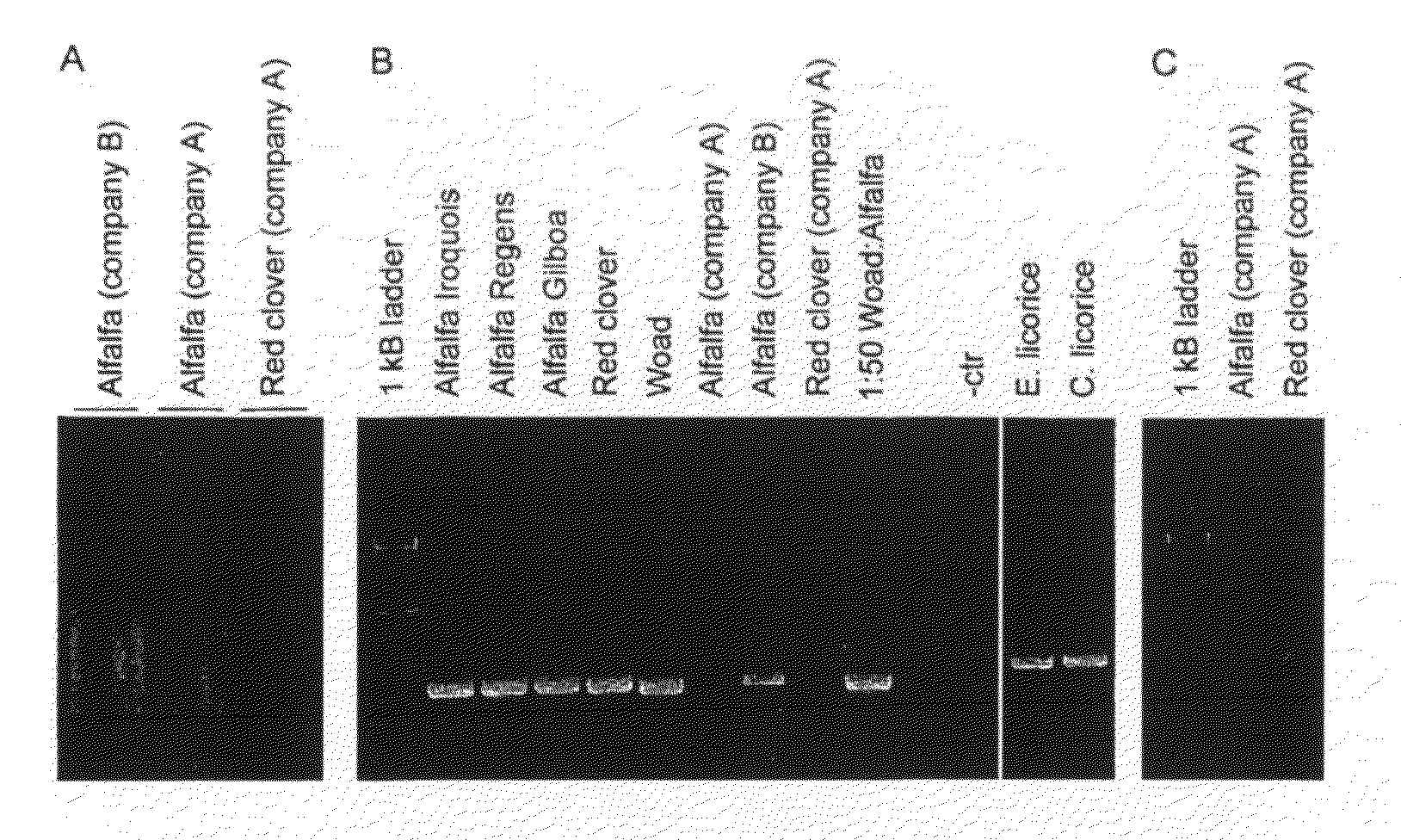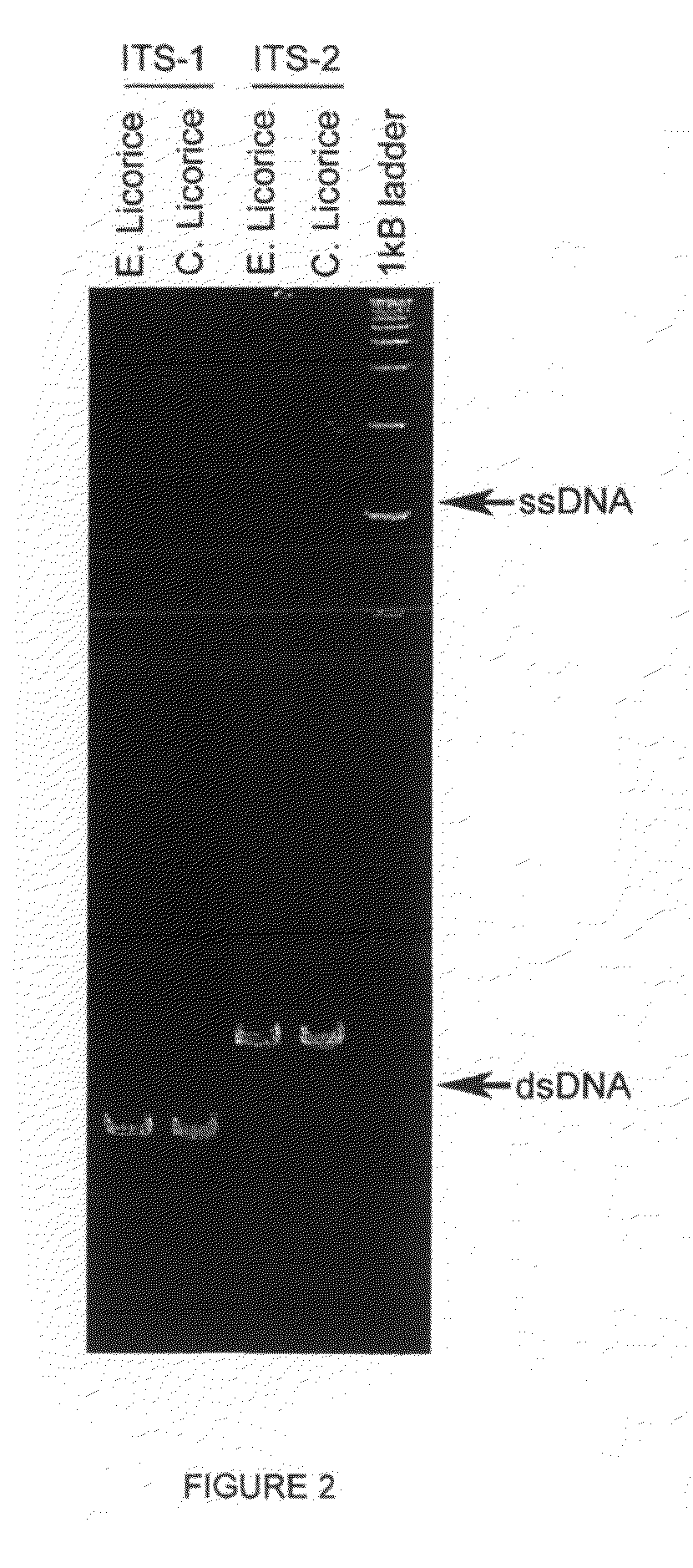Use of pcr-based techniques to analyze compositions of botanicals
a botanical composition and composition technology, applied in the field of botanical composition analysis, can solve the problems of inability to accurately analyze the composition of botanical supplements, difficulty in delivering botanical supplements, and difficulty in detecting the effect of botanical supplements, etc., and achieve the effect of speed and efficiency of methods
- Summary
- Abstract
- Description
- Claims
- Application Information
AI Technical Summary
Benefits of technology
Problems solved by technology
Method used
Image
Examples
example i
Materials and Methods
[0069]DNA Extraction
[0070]A modified CTAB procedure (Doyle et al., 1997) was used to extract genomic DNA from fresh leaves of alfalfa (Medicago sativa), red clover (Trifolium pratense), woad (Isatis indigotica), European licorice (Glycyrrhiza glabra), Chinese licorice (Glycyrrhiza uralensis), or plant material contained in commercial alfalfa or red clover supplements of company A or B. Aliquots of DNA were run on a 1% agarose gel to check the quality of the DNA. A repair reaction (Leroy et al., 2000) was used on those samples that appeared degraded and failed to produce a PCR product.
PCR Amplification
[0071]The polymerase chain reaction was carried out in a final volume of 20 ul with 1U Eppendorf Hotmaster Taq, 1×PCR buffer, 1.5 mM MgCl2, 100 ng of each primer, 1 mM of each deoxynucleotide (dATP, dCTP, dTTP, dGTP) and 1 ul genomic DNA from fresh tissue or 4 ul repaired DNA. The primers used for amplification of the ITS region are as follows (described in Blattner...
PUM
| Property | Measurement | Unit |
|---|---|---|
| time | aaaaa | aaaaa |
| time | aaaaa | aaaaa |
| time | aaaaa | aaaaa |
Abstract
Description
Claims
Application Information
 Login to View More
Login to View More - R&D
- Intellectual Property
- Life Sciences
- Materials
- Tech Scout
- Unparalleled Data Quality
- Higher Quality Content
- 60% Fewer Hallucinations
Browse by: Latest US Patents, China's latest patents, Technical Efficacy Thesaurus, Application Domain, Technology Topic, Popular Technical Reports.
© 2025 PatSnap. All rights reserved.Legal|Privacy policy|Modern Slavery Act Transparency Statement|Sitemap|About US| Contact US: help@patsnap.com



